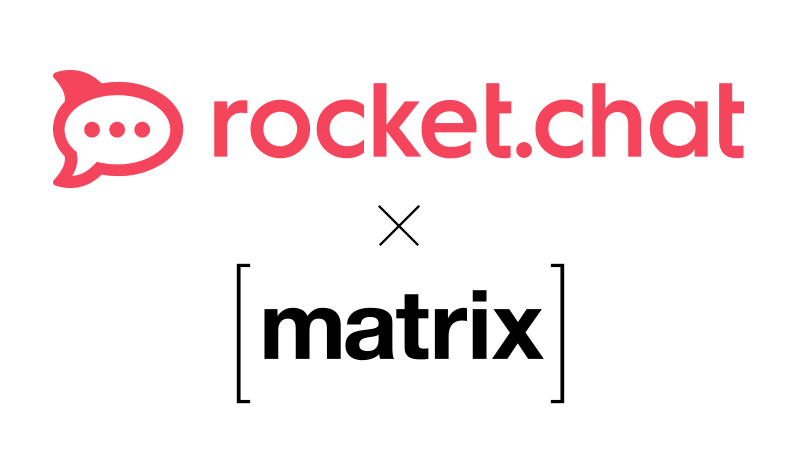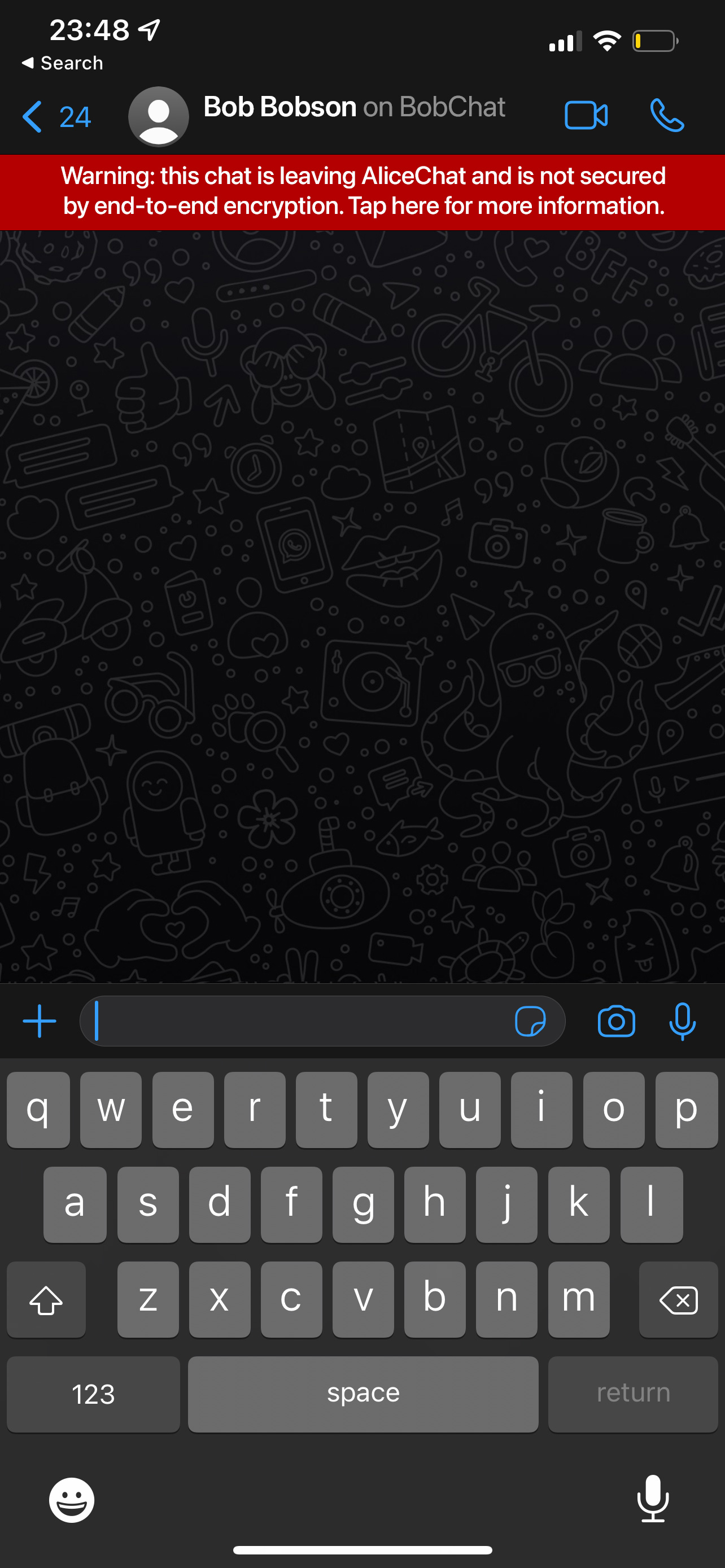TL;DR: you can now officially join the Matrix Foundation as an organisational
or individual member in order to sustainably support core Matrix development,
help steer the direction of the protocol and how best to fund it! Organisations
can join by filling this form and we will get back in touch, or individuals can
now donate directly here (as a more efficient alternative to Patreon, which
remains online for Patrons used to it).
Hi all,
Only two days late for Giving Tuesday (and 4 years late on the Foundation
scale), we are super excited to announce that we are finally expanding the
Matrix Foundation into a fully-fledged non-profit fund-raising organisation to
help support the core Matrix development and the wider open source Matrix
ecosystem!
Has your organisation been using Matrix to communicate via the open source
server and clients and you want to ensure that improvements and features still
keep coming? Become a member, and feed into the roadmap.
Has your company been building on top of Matrix, making the most of its openness
and flexibility, but you’ve never figured out how to contribute back in order
to ensure the resilience of the tech which you rely on for the success of your
business? Become a member, and ensure the core development is funded and that
Matrix is here to thrive.
Are you about to be designated a gatekeeper by the EU, and have to rapidly figure out how to implement DMA-compliant interoperability (complete with end-to-end encryption compatibility) into your services? Become a member, and discover how Matrix can solve all your problems, while providing your input too.
Are you looking to implement DMA interoperability but don't fall into the gatekeeper designation? Become a member, and help ensure Matrix fits your needs too!
Are you a non-profit organisation with a mission to provide secure and sovereign communications to those who need it the most, providing an alternative to the current players? Become a member, and help us take our mission forward.
Are you an individual who strongly supports the mission of Matrix and wants to see it thrive and become the open backbone of the world’s communications? Become a member, and support the future of Matrix.
In short, this finally gives the wider world a way to contribute concretely to the significant costs of funding folks to work fulltime on core Matrix development - which now covers over 243(!) projects in github.com/matrix-org. Core Matrix work ranges from:
- managing the Matrix spec itself
- maintaining the reference client SDKs and encryption and getting them independently audited
- maintaining example server implementations in the form of Synapse and Dendrite
- writing the test suite
- publishing the matrix.org website
- promoting awareness of Matrix
- running the matrix.org homeserver
- and so much more...
In exchange for supporting the Foundation, and beyond providing certainty that our work can continue, organisations and individuals who contribute financially will be able to directly provide input to the trajectory of the core Matrix developments by becoming official members of the Matrix.org Foundation.
Introducing Foundation Memberships and the Governing Board
Practically speaking, this means that we are going to create a "Governing Board" to the Matrix.org Foundation: a new team, made up of members voted by the overall membership, a subset of the Guardians and a subset of the Spec Core Team. The Governing Board will have the responsibility of determining how Foundation funds are distributed and used, how the Spec Core Team roadmap is prioritised, how to best grow Matrix awareness, etc.
In other words, we are literally expanding the day-to-day steering of the direction of the Matrix Foundation to the wider community. In order to run the Governing Board and the overall work of the Foundation, we are also hiring an Executive Director, so please get in touch via [email protected] if you’re a non-profit foundation-running expert! In the interim, while this search proceeds, Matthew and Amandine will fill the role with the support of the other Guardians of Matrix. The Guardians themselves retain their existing function as the Foundation's non-executive board - responsible for safeguarding the overall mission of Matrix, appointing the membership of the Spec Core Team, approving membership applications, and defining the overall changes we’re outlining here.
Membership comes at various levels, each with different rewards:
- Individual memberships (i.e. today’s Patreon supporters):
- Ability to vote in the appointment of up to 2 ‘community representatives’ to the Foundation's governing board.
- Name on the Matrix.org website
- Silver member: between £2,000 and £80,000 per year, depending on organisation size
- Ability to vote on the appointment of up to 2 ‘Silver representative’ to the Foundation's governing board
- Supporter logo on the front page of the new Matrix.org website
- Gold member: £200,000 / year, adds:
- Ability to vote on the appointment of up to 3 ‘Gold representatives’ to the Foundation's governing board.
- Press release announcing the sponsorship
- 1 original post on the Matrix.org blog per year
- Participation in the internal Spec Core Team room
- Larger logo on the front page of Matrix.org
- Platinum member: £500,000 / year, adds:
- Ability to vote on the appointment of up to 5 ‘platinum representatives’ to the Foundation's governing board.
- 1 sponsored Matrix Live episode per year
- Largest logo on the front page of Matrix.org
As the activities of the Foundation increase, we expect to add more benefits to this list, for example discounts on sponsoring a future Matrix Conference, or similar.
Governing Board elections will occur yearly, with the first election planned towards the end of this year once we’ve gathered together the first wave of members and candidates have proposed themselves for election.
For anyone building on Matrix, memberships are a no-brainer as they will ensure the perpetuity and future-proof-ness of the standard. But for anyone supporting the mission of Matrix, this membership can be key to define its future.
Meanwhile, with Matrix looking increasingly integral to implementing interoperable communication for compliance with the EU’s Digital Markets Act (whether that’s as pure Matrix, or as part of the IETF MIMI initiative), this is an incredible opportunity for the organisations impacted by DMA to get a front-row seat within the Foundation to ensure that Matrix thrives and solves the challenges posed by the act. To get involved, please apply via the membership application form.
So, why is this all happening?
Since 2017, core Matrix development has been funded primarily by Element - the company founded by the team who created Matrix. Over the years, Element has put tens of millions of dollars into Matrix - which in turn has come from both selling Matrix hosting (EMS), on-premise Matrix solutions, and VC investment in Element. To put it in perspective, even though there are over 5000 contributors to github.com/matrix-org - over 90% of the actual committed lines of code come from Element employees. Similarly, while we are enormously thankful for the past and existing generous donations from the wider Matrix community, today they only come to $6,000 a month, relative to the $400,000 a month that Element has been funding.
Over the last year, we’ve seen a palpable shift within the Matrix ecosystem. Matrix is growing faster than ever. Synapse has improved immeasurably, using less RAM than ever and even sprouting Rust to optimise its hot paths. Element has improved immeasurably too, with an entirely new design on mobile, and tons of new features including threads, voice messages, location share, video rooms and more. Monthly active users reported via Synapse’s phone-home stats have almost doubled and are growing at their fastest ever rate. The number of servers has increased equivalently. We hear about major new commercial Matrix deployments almost every day. However, while usage is going through the roof - we haven’t seen a matching increase in players looking to support the project.
In fact, we’ve seen the opposite: commercial vendors forking the protocol while trying to break up the core team. Matrix tenders lost to “preferred” vendors who know absolutely nothing about Matrix. Vendors selling Matrix hosting or services without contributing anything back to the project at all. Organisations with huge amounts of money (governments, $$B massive enterprises) have enthusiastically launched proprietary Matrix solutions by building on the liberally-licensed Apache reference Matrix implementations… while contributing back nothing. Now, we are enormously grateful for the commercial Matrix deployments who do actually work with Element to fund core development or contribute code themselves - but this is very clearly the minority. Obviously it’s great to see folks building on Matrix - but it’s rather galling if it ends up with insufficient funding trickling down to the core Matrix team to be able to build the foundational technology that everyone else is relying on.
Element in particular has staffed up in order to both support the core Matrix ecosystem (the spec, Synapse, Dendrite, Client SDKs, Encryption implementations etc) as well as Element-specific work (the Element apps, EMS, the Element Enterprise Installer, etc). As a result, Element employs roughly twice as many developers as you might expect, and while Matrix is here to stay, this turns out not to be sustainable for Element unless the wider ecosystem helps support the foundational work
We believe the world needs secure decentralised communication more than ever, and ensuring the Foundation can distribute funding to those contributing to the core platform (be that Element or individuals or other organisations) is key to that. So: please consider this a call to arms - if you believe the world needs Matrix, and particularly if you depend on it for your business, please join the Foundation and participate!
Fill in the form to apply for membership, or if you are not acting on behalf of an organisation, you can go straight to our donation page.
Matthew, Amandine & the whole Matrix.org Foundation


